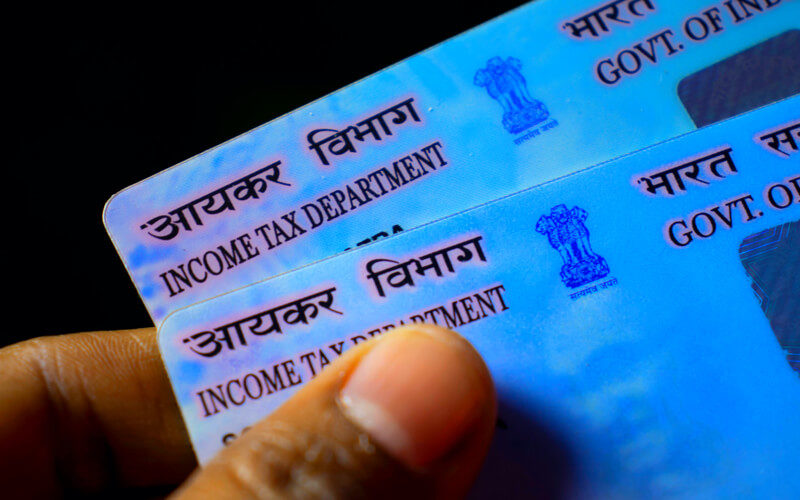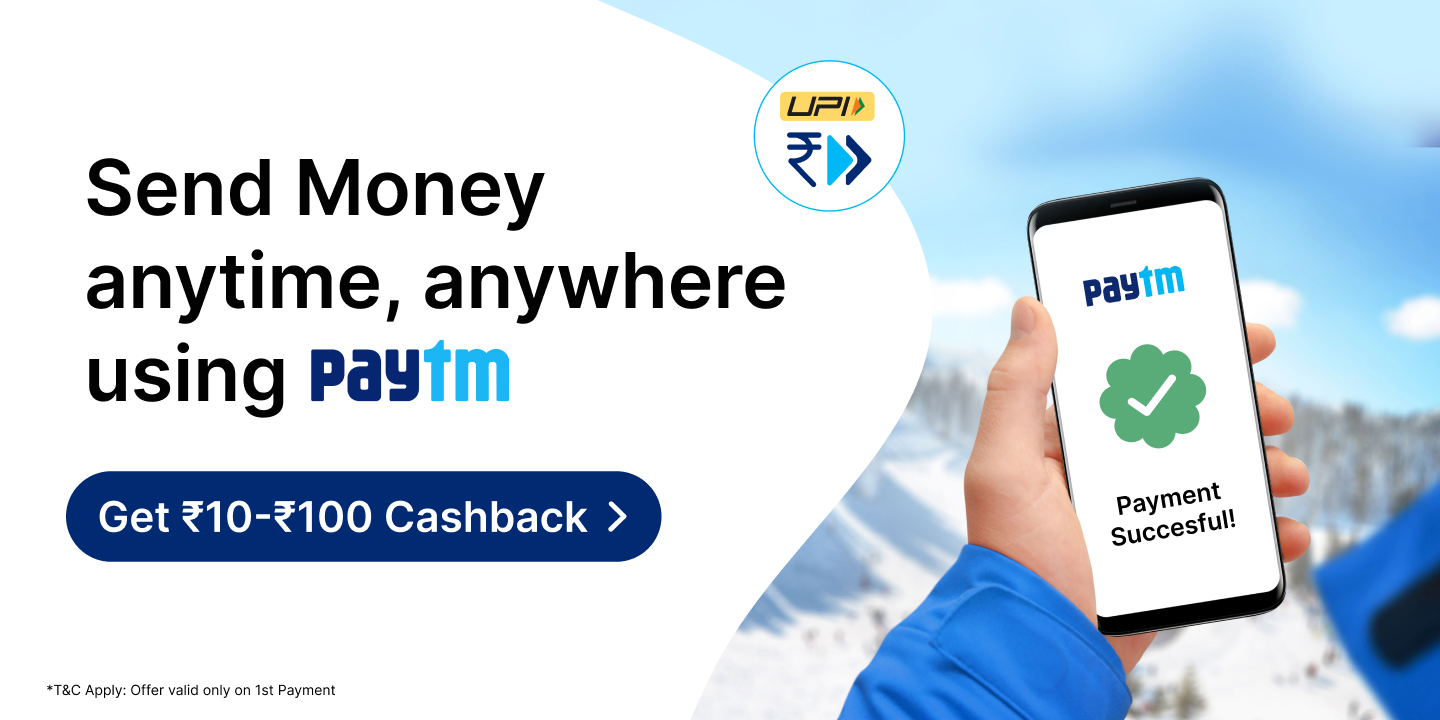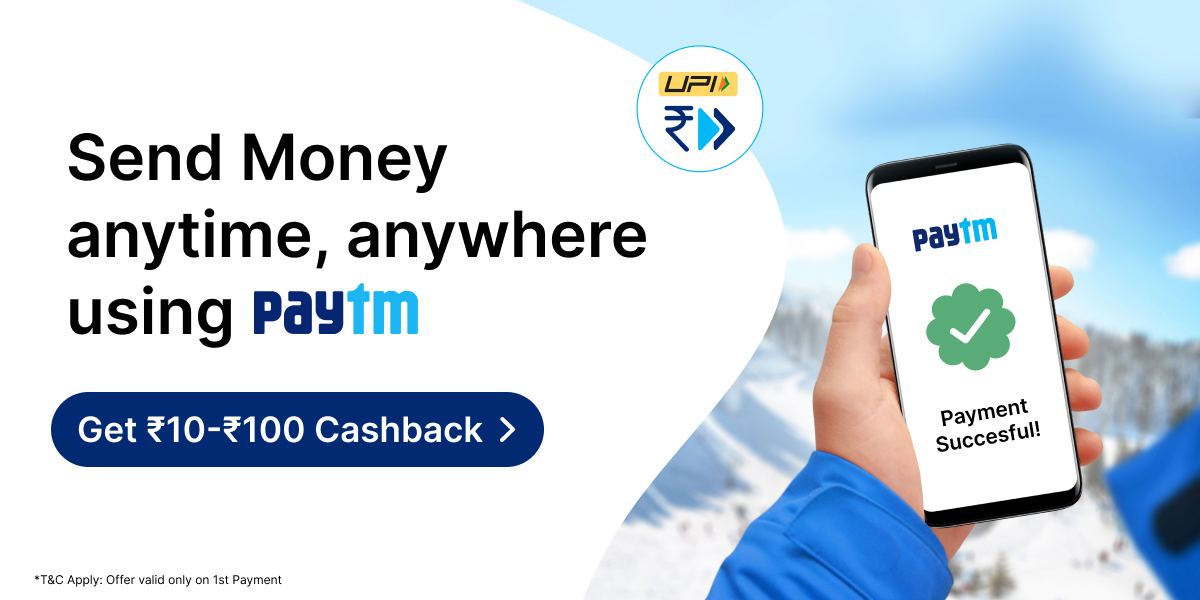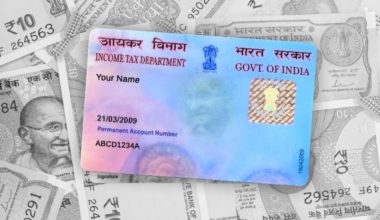Know everything about a PAN card, the structure of it and more in the blog before applying for a PAN card. Continue reading the blog to know more.
The PAN Card, also known as the Permanent Account Number Card, is a crucial document that serves as a unique identification number for individuals and entities in India. It is issued by the Income Tax Department of India and is widely used for various financial and legal transactions. Understanding the PAN card details, including the required documents, eligibility criteria, types, structures, and more, is essential for individuals and businesses alike.
This guide aims to provide you with all the necessary information about PAN cards, helping you navigate the application process and comply with the relevant regulations.
What is a PAN Card?
A PAN Card, which stands for Permanent Account Number Card, is a unique identification card issued by the Income Tax Department of India. It is a 10-character alphanumeric identifier that serves as a crucial proof of identity for individuals and entities in India, primarily for financial and taxation purposes.
Here are some key points about PAN Cards:
- Unique Identifier: Each PAN Card has a unique combination of letters and numbers, which helps the government track financial transactions and prevent tax evasion.
- Mandatory for Financial Transactions: PAN Cards are essential for various financial transactions, including opening bank accounts, receiving a salary, buying or selling assets like property or vehicles, investing in securities, and more.
- Taxation: PAN is mandatory for filing income tax returns in India. It is used to link an individual’s or entity’s financial transactions with their tax liabilities.
- Identity Proof: It is widely accepted as a proof of identity, and many government and non-government agencies require PAN as a valid identity document.
- International Use: PAN Cards are not limited to use within India. They can also be used as proof of identity for international financial transactions and investments.
- Application: To obtain a PAN Card, individuals and entities must apply for it through the official website of the Income Tax Department of India or through authorized service providers. The application process typically involves submitting required documents and paying a processing fee.
- Validity: Once issued, a PAN Card is valid for a lifetime and does not need to be renewed.
- Correction and Changes: If there are errors in the PAN Card or if any changes need to be made (e.g., change of address), individuals can apply for corrections or updates.
- Penalty: Not having a PAN Card or providing an incorrect PAN for financial transactions can lead to penalties and legal consequences.
What is the Structure of a PAN Card?
The structure of a PAN Card is meticulously designed to convey various information within its 10-character alphanumeric format. Each character serves a specific purpose and carries meaningful information. Here’s a breakdown of the PAN Card structure:
First Five Characters: The initial five characters are always uppercase letters, for example, ‘AAA XX123 4B’.
First Three Characters: These first three characters form an alphabetic sequence and are used for geographical categorization.
Fourth Character: The fourth character is crucial as it identifies the cardholder type. It indicates whether the PAN card belongs to an individual or a specific entity. The possible values for the fourth character and their corresponding meanings are as follows:
- A: Association of persons (AOP)
- B: Body of Individuals (BOI)
- C: Company
- F: Firm
- G: Government
- H: HUF (Hindu Undivided Family)
- L: Local Authority
- J: Artificial Juridical Person
- P: Individual or Person
- T: Trust (AOP)
Fifth Character: The fifth character in the PAN Card number serves different purposes depending on the cardholder type:
- In the case of a “Personal” PAN card (where the fourth character is ‘P’), the fifth character typically represents the person’s surname or last name.
- In the event that the fourth character is any of the letters “C”, “H”, “F”, “A”, “T”, “L”, “J”, “G”, or “A”, the fifth character may represent the name of the trust, society, entity, or organization
Tenth (Final) Character: The tenth and final character in the PAN Card is an alphabetic digit used for validation purposes. It is computed based on the preceding characters using a specific algorithm to ensure the accuracy and validity of the PAN
What are the Types of PAN Cards?
There are several types of PAN cards available, each with a specific purpose, as explained below:
Certainly, here is an informative breakdown of the different types of PAN (Permanent Account Number) cards:
PAN Card for Organizations and Companies:
This type of PAN card is issued to registered companies, including private limited companies, public limited companies, and other corporate entities. It is a mandatory requirement for such organizations to conduct financial transactions and fulfill their tax obligations.
PAN Card for Cooperative Societies and Trusts:
Cooperative societies and trusts are eligible for a specific category of PAN cards. These entities, which can include housing societies, educational trusts, and charitable organizations, require a PAN card to manage their financial activities and comply with tax regulations.
PAN Card for Business Units or Partnership Firms:
Business units, such as sole proprietorships and partnership firms, can obtain PAN cards to conduct financial operations and report their income. These PAN cards help the business units comply with taxation requirements and maintain transparency in financial dealings.
When is a PAN Card Used?
Apart from the Income Tax Purposes, a PAN Card is used in the following cases-
| Use Case | Description |
|---|---|
| Identity Documentation | PAN cards serve as a valid proof of identity, often accepted in conjunction with other IDs like Aadhar or voter ID cards. |
| Income Tax Returns | Mandatory for individuals and entities eligible to file income tax returns. |
| Claiming Excess TDS | Excess Tax Deducted at Source (TDS) can be claimed by linking the PAN to the taxpayer’s bank account. |
| Opening Bank Accounts | Essential for opening bank accounts; PAN details are part of the Know Your Customer (KYC) process. |
| Real Estate Transactions | Required as proof when buying, renting, or selling property. |
| Loan Applications | A PAN card is a requisite document for various types of loans, including education loans and personal loans. |
| Fixed Deposits | Necessary when investing over Rs. 50,000 in a fixed deposit; banks deduct TDS on the interest earned. |
| Telecom Services | PAN number must be provided when obtaining a new telephone or mobile connection from cellular operators. |
| Jewelry Purchases | PAN card details are needed when buying jewelry valued at more than Rs. 5,00,000. |
| Foreign Exchange Transactions | Submission of PAN card details is required for currency exchange from Indian rupees to foreign currency. |
| Investment in Securities | PAN information is necessary for securities transactions exceeding Rs. 50,000, including mutual funds, debentures, and equities. |
| High-Value Goods & Services | PAN card information is required for transactions involving more than Rs. 2 lakh in the purchase or sale of goods and services. |
Who is Eligible for a PAN Card?
The eligibility criteria for obtaining a PAN card are defined by the Income Tax Act and extend to various categories of individuals and entities. Here are the key eligibility criteria:
- Indian Residents:
- Self-employed professionals or business owners with an annual turnover of Rs. 5 lakh or more.
- Individuals who are required to pay taxes, including salaried employees whose income exceeds the taxable limit.
- Individuals working in the import and export industries.
- Registered Organizations:
- Companies, firms, associations, trusts, and cooperative societies that are registered under applicable laws.
- Non-Residents of India (NRIs), Persons of Indian Origin (PIOs), Overseas Citizens of India (OCIs), and Foreigners:
- NRIs, PIOs, OCIs, and foreigners who are covered by the provisions of the Income Tax Act of 1961.
- Minors:
- Parents or legal guardians can apply for a PAN card on behalf of their minor children.
It is important to note that the eligibility criteria may vary based on specific circumstances and changes in the Income Tax Act. It is advisable to refer to the latest guidelines and consult with the Income Tax Department or authorized agencies for accurate and up-to-date information regarding eligibility for a PAN card.
What are the Documents Required to Apply for a PAN Card?
Following are the documents required to be submitted for a PAN card:
| Indian Nationals | Eligibility Criteria |
|---|---|
| Individual |
|
| Partnership Firms |
|
| Limited Liability Partnership |
|
| Trusts |
|
| Local Authorities |
|
| Association of Persons |
|
| Artificial Judicial Person |
|
| Hindu Undivided Families (HUF) |
|
| Minors |
|
| Person with Intellectual Disability |
|
What are the Documents Required to Apply for a PAN Card for Foreign Citizens?
The PAN card eligibility criteria for foreign citizens who want to work in India or establish an Indian subsidiary or company require them to apply for a PAN card. To apply, foreign nationals need to fill out and submit Form 49AA along with the following documents and a fee to the PAN card authorities:
| Foreign Citizens | List of Documents |
| Proof of Identity |
|
| Proof of Address |
|
- Copy of India’s Registration Certificate or approval copy: The foreign entity must submit a copy of the Registration Certificate or approval obtained from the Indian Authorities to open an office in India. This document serves as proof of the entity’s intention to establish a presence in India.
- Photocopy of the entity’s registration certificate: The foreign entity should provide a photocopy of its registration certificate issued by the country in which it is located. This certificate needs to be attested by the Ministry of External Affairs, a High Commission, or an Indian Embassy. The attestation can be done at the Consulate of the country where the entity is residing or by an overseas Authorized Official of an Indian Scheduled Bank Branch.
How to Apply for a PAN Card Online?
To initiate the process of obtaining a PAN card online, there are two portals available for the applicant to choose from, namely NSDL and UTIITSL. Below, you will find a detailed description of the steps required for applying for a PAN card through these portals.
Read More: Essential Documents Required for PAN Card
How to Apply for PAN Card Through NSDL?
To apply for a PAN card through NSDL, follow these steps:
- Visit the official website of NSDL and click on the ‘Application Type’ option.
- Choose the appropriate application form based on your citizenship: Form 49A for Indian citizens or Form 49AA for foreign citizens.
- Select the category that best applies to you from the available options.
- Fill in your personal details accurately.
- Choose the title (Shri, Smt, or Kumari) to be displayed on your PAN card.
- Provide your last name/surname, first name, and middle name (if applicable).
- Enter your date of birth/incorporation/formation in the DD/MM/YY format.
- Provide your active email address.
- Enter your current mobile number.
- Read and acknowledge the guidelines.
- Enter the CAPTCHA code and submit the PAN application.
- You will be redirected to the payment page. Pay the applicable fee of Rs. 93 for Form 49A or Rs. 864 for Form 49AA.
- Choose a convenient payment method such as credit card, debit card, net banking, cheque, or demand draft.
- After submitting the PAN card application successfully, you will receive an acknowledgement number. Print and keep this page for future reference.
- Affix your passport-size photograph on the acknowledgement page, sign it using a black pen, and send it along with the required documents to the Income Tax Department within 15 days of submitting the online application.
- Include supporting documents such as residential proof, identity proof, or any other documents as requested.
- Once your documents are validated successfully, you will receive your PAN card number on your registered mobile number and email address.
How to Apply for a PAN Card Through UTIITSL?
To apply for a PAN card through UTIITSL, follow these steps:
- Visit the official website of UTIITSL and click on the ‘For PAN Cards’ option.
- Click on ‘Apply PAN Card’.
- You will be redirected to a new page with different options, such as PAN card for Indian Citizens, PAN card for Foreign Citizens, Download e-PAN, etc.
- Choose either ‘PAN card for Indian Citizen’ or ‘PAN card for Foreign Citizen’.
- Select the appropriate option for your citizenship and click on ‘Apply for a new PAN Card (Form 49A)’, ‘Regenerate Online PAN application (Form 49A)’, or ‘Download blank PAN Form 49A’.
- Click on ‘Apply for a new PAN Card’.
- You will be directed to Form 49A or Form 49AA with two options to fill the form: ‘Physical Mode’ and ‘Digital Mode’.
- Select ‘Physical Mode’ if you want a physical copy of the PAN card. In this case, you will need to submit the signed application to the nearest UTIITSL office.
- Fill in all the required information, including the ‘Status of the Applicant’, and choose the desired PAN card mode.
- Submit the application.
- On the next screen, make the necessary payment for your PAN card using methods such as demand draft, cheque, internet banking, credit card, or debit card.
- Once the payment is made, you will receive a soft copy of the acknowledgement paper.
- Print out the acknowledgement paper, affix your passport-size photograph, and sign it with a black pen.
- Send the acknowledgement receipt to the Income Tax Department along with copies of your identity proof and address proof within 15 days from the date of online application submission.
- After the documentation process is completed and verified, you will receive your PAN number on your registered mobile number and email address.
How to Apply for a PAN Card Offline?
To apply for a PAN card offline, please follow the steps outlined below:
- Visit the official website of NSDL.
- Look for the “Apply Online” option and click on it. Download either Form 49A (for Indian citizens) or Form 49AA (for foreign citizens).
- Fill out the downloaded form completely, ensuring that all the required information is accurately provided.
- Gather all the necessary supporting documents, such as proof of identity (POI) and proof of address (POA), as specified in the form.
- Attach a recent passport-sized photograph as per the guidelines mentioned in the form.
- Make the payment for the PAN card fee, either online or through a Demand Draft (if applicable).
- Once the form is filled and all the documents are gathered, take a printout of the form.
- Sign the printed form with your signature.
- Attach the passport-sized photograph on the designated space and also attach the supporting documents.
- Carefully package all the documents, including the filled form, photograph, and supporting documents.
- Send the package to the NSDL office via mail or courier, ensuring that it reaches the designated address.
- If you are paying through a Demand Draft, make sure to include it in the package.
- Keep the 15-digit acknowledgement number, which is generated after submitting the online application, for future reference.
How to Track PAN Card Delivery Status through the UTIITSL Website?
To track the delivery status of your PAN card through the UTIITSL website, please follow these steps:
- Visit the official website of UTIITSL.
- Look for the section related to PAN cards. It may be labeled as ‘For PAN Cards’ or something similar
- Click on the option ‘Track your PAN card’ or a similar link provided within that section.
- On the tracking page, you will be prompted to enter either your application coupon number or PAN number.
- Fill in the appropriate field with the required information.
- In the next block or dropdown menu, select the appropriate options provided based on your application.
- Enter the captcha characters as shown on the screen to verify that you are a human.
- Click on the ‘Submit’ or ‘Track’ button to proceed with the tracking process.
- The website will display the current status of your PAN card delivery on the screen.
How to Track PAN Card Delivery Status through NSDL?
To track the delivery status of your PAN card through the NSDL website, please follow these steps:
- Visit the official website of NSDL.
- Look for the section related to PAN card services. It may be labeled as ‘PAN- New-Change Request’ or something similar.
- Click on the appropriate option for tracking the PAN card delivery status.
- You will be prompted to enter the acknowledgement number that was provided to you at the time of application.
- Enter the acknowledgement number in the provided field.
- Fill in the characters displayed on the screen, usually in a code or captcha box, to verify that you are a human.
- Click on the ‘Submit’ or ‘Track’ button to proceed with the tracking process.
- The website will display the current status of your PAN card delivery on the screen
How to Track PAN Card Delivery Status Through Indian Post?
To track the delivery status of your PAN card through Indian Post, follow the steps below:
- Visit the official website of Indian Post.
- Look for the ‘Track N Trace’ option on the website.
- Click on ‘Track N Trace’ to access the tracking service.
- Choose the ‘Consignment’ option from the available tracking options.
- Enter the consignment number provided to you for tracking your PAN card.
- Fill in the characters displayed on the screen for verification purposes.
- Click on ‘Track Now’ or a similar button to initiate the tracking process.
- The website will display the current status and whereabouts of your PAN card delivery.
How to Do PAN Verification?
To perform PAN verification, there are a few easy steps you can follow based on the available information:
PAN Verification by Aadhaar Card
To verify PAN details using the Aadhaar Card, please follow these steps:
- Visit the official website of the Income Tax Department e-filing, which can be accessed at www.incometax.gov.in.
- Look for the section titled ‘Our Services’ and click on ‘Link Aadhaar’.
- In the ‘Link Aadhaar Status’ section, enter the required details as prompted. This typically includes your PAN number and Aadhaar number.
- Once you have entered the necessary details, click on ‘View Link Aadhaar Status’ or a similar button.
- The system will verify the information provided and display the PAN verification status on the screen
PAN Verification by Date of Birth and Name
To verify PAN details using the date of birth and name, you can follow these steps:
- Log in to the official Income Tax Department e-filing website.
- Look for the option or section labeled as ‘Verify Your PAN’ or similar.
- Enter the required details, which typically include your date of birth and name, in the provided fields.
- After entering the details, click on ‘Continue’.
- The system will redirect you to another page specifically designed for PAN verification.
- Follow the instructions given on that page to complete the PAN verification process.
- The website will display the PAN status, confirming whether the provided date of birth and name match the PAN details on record.
PAN Verification by PAN Number
An applicant can follow the given instructions to do PAN verification-
- Visit the official Income Tax Department e-filing website
- Click on ‘Verify Your PAN Details’
- Enter all the details and click on ‘Continue’
- Your PAN verification status will be displayed on the screen










